Find information on Common Variable Immune Deficiency (CVID), including definition, diagnosis, treatment, and expectations for patients.
Get Started for FREE
Sign up with Facebook Sign up with X
I don't have a Facebook or a X account

 Your new post is loading... Your new post is loading...
 Your new post is loading... Your new post is loading...
Press release about a research to be presented in the American Academy of Neurology 66th Annual Meeting. Better be cautious and patient with this information: in the study only 16 patients vs 16 healthy controls have been studied. A too small cohort to make a strong conclusion.
Alfredo Corell's insight:
PHILADELPHIA – An antibody found in the blood of people with multiple sclerosis (MS) may be present long before the onset of the disease and its symptoms, according to a study released today that will be presented at theAmerican Academy of Neurology’s 66th Annual Meeting in Philadelphia, April 26 to May 3, 2014.
Daily Mail Study: Culprit leading to rheumatoid arthritis discovered Asahi Shimbun “We can expect to develop a drug that is targeted at denatured proteins to dissolve them, or a method of examination that will allow doctors to make a diagnosis of...
Alfredo Corell's insight:
Significance Cellular misfolded proteins are transported to the cell surface by MHC class II molecules via association with the peptide-binding groove without processing to peptides. We found that IgG heavy chain is transported to the cell surface by MHC class II molecules. Furthermore, IgG heavy chain associated with MHC class II molecules is recognized by autoantibodies in rheumatoid arthritis patients. Autoantibody binding to IgG heavy chain complexed with different MHC class II alleles was strongly associated with rheumatoid arthritis susceptibility conferred by certain MHC class II alleles. These findings suggest that misfolded proteins complexed with MHC class II molecules could be targets for autoantibodies in autoimmune diseases, which might be involved in autoimmune disease susceptibility. Link to PNAS publication: http://www.pnas.org/content/early/2014/02/19/1401105111.short
The PedPAD study: Boys predominate in the hypogammaglobulinemi
|

|
Scooped by Alfredo Corell |
FARE works on behalf of the 15 million Americans with food allergies, including all those at risk for life-threatening anaphylaxis.
FARE’s Food Allergy Field Guide is a packet for individuals and families who have been newly diagnosed with food allergies.
Within this packet, you’ll find content from our “Managing Food Allergies: What You Need to Know” brochure, a checklist for getting started, a copy of FARE’s Food Allergy & Anaphylaxis Emergency Care Plan, information on food labels, tips for avoiding allergens and cross-contact, advice about dining out with food allergies, frequently asked questions and much more.

|
Scooped by Alfredo Corell |
Btk is the protein affected in XLA, a disease identified as a B cell differentiation defect. Btk is crucial for B cell differentiation and activation, but its role in other cells is not fully understood. This review focuses on the function of Btk in monocytes, neutrophils, and platelets and the receptors and signaling cascades in such cells with which Btk is associated.

|
Scooped by Alfredo Corell |
PLOS ONE: an inclusive, peer-reviewed, open-access resource from the PUBLIC LIBRARY OF SCIENCE. Reports of well-performed scientific studies from all disciplines freely available to the whole world.
About half of all subjects with common variable immune deficiency (CVID) are afflicted with inflammatory complications including hematologic autoimmunity, granulomatous infiltrations, interstitial lung disease, lymphoid hyperplasia and/or gastrointestinal inflammatory disease. The pathogenesis of these conditions is poorly understood but singly and in aggregate, these lead to significantly increased (11 fold) morbidity and mortality, not experienced by CVID subjects without these complications. To explore the dysregulated networks in these subjects, we applied whole blood transcriptional profiling to 91 CVID subjects, 47 with inflammatory conditions and 44 without, in comparison to subjects with XLA and healthy controls. As compared to other CVID subjects, males with XLA or healthy controls, the signature of CVID subjects with inflammatory complications was distinguished by a marked up-regulation of IFN responsive genes. Chronic up-regulation of IFN pathways is known to occur in autoimmune disease due to activation of TLRs and other still unclarified cytoplasmic sensors. As subjects with inflammatory complications were also more likely to be lymphopenic, have reduced B cell numbers, and a greater reduction of B, T and plasma cell networks, we suggest that more impaired adaptive immunity in these subjects may lead to chronic activation of innate IFN pathways in response to environmental antigens. The unbiased use of whole blood transcriptome analysis may provides a tool for distinguishing CVID subjects who are at risk for increased morbidity and earlier mortality. As more effective therapeutic options are developed, whole blood transcriptome analyses could also provide an efficient means of monitoring the effects of treatment of the inflammatory phenotype.

|
Scooped by Alfredo Corell |
#Immunology: New Diagnostic Criteria for Common Variable Immunodeficiency (#CVID): IV or SubQ #Immunoglobulin? http://t.co/hQSMeiFj8y … #PI
Common variable immune deficiency (CVID) is the most frequent symptomatic primary immune deficiency in adults. The standard of care is intravenous immunoglobulin (IVIG) or subcutaneous immunoglobulin (scIG) therapy. The cause of CVID is currently unknown, and there is no universally accepted definition of CVID. This creates problems in determining which patients will benefit from IVIG/scIG treatment. In this paper, we review the difficulties with the commonly used European Society of Immune Deficiencies (ESID) and the Pan American Group for Immune Deficiency (PAGID) definition of CVID. We propose new criteria for the diagnosis of CVID, which are based on recent scientific discoveries. Improved diagnostic precision will assist with treatment decisions including IVIG/scIG replacement. We suggest that asymptomatic patients with mild hypogammaglobulinaemia are termed hypogammaglobulinaemia of uncertain significance (HGUS). These patients require long-term follow-up, as some will evolve into CVID.

|
Scooped by Alfredo Corell |
A major challenge in human genetics is to devise a systematic strategy to integrate disease-associated variants with diverse genomic and biological data sets to provide insight into disease pathogenesis and guide drug discovery for complex traits...
- Yukinori Okada,
- Di Wu,
- Gosia Trynka,
- Towfique Raj,
- Chikashi Terao,
- Katsunori Ikari,
- Yuta Kochi,
- Koichiro Ohmura,
- Akari Suzuki,
- Shinji Yoshida,
- Robert R. Graham,
- Arun Manoharan,
- Ward Ortmann,
- Tushar Bhangale,
- Joshua C. Denny,
- Robert J. Carroll,
- Anne E. Eyler,
- Jeffrey D. Greenberg,
- Joel M. Kremer,
- Dimitrios A. Pappas,
- Lei Jiang,
- Jian Yin,
- Lingying Ye,
- Ding-Feng Su,
- Jian Yang
- et al.
- Nature (2013) doi:10.1038/nature12873
- Link to a spanish newspaper (El Mundo Salud) summary:
- http://www.elmundo.es/salud/2013/12/24/52b88f9122601dac238b4588.html?goback=%2Egde_1789669_member_5826671948721057795#%21

|
Scooped by Alfredo Corell |
Volume 12, Issue 11, September 2013, Pages 1076–1084
Benedetta Marigliano, Alessandra Soriano, Domenico Margiotta, Marta Vadacca, Antonella AfeltraAbstract
The lungs are frequently involved in Connective Tissue Diseases (CTDs). Interstitial lung disease (ILD) is one of the most common pleuropulmonary manifestations that affects prognosis significantly. In practice, rheumatologists and other physicians tend to underestimate the impact of CTD-ILDs and diagnose respiratory impairment when it has reached an irreversible fibrotic stage. Early investigation, through clinical evidence, imaging and – in certain cases – lung biopsy, is therefore warranted in order to detect a possible ILD at a reversible initial inflammatory stage. In this review, we focus on lung injury during CTDs, with particular attention to ILDs, and examine their prevalence, clinical manifestations and histological patterns, as well as therapeutic approaches and known complications till date. Although several therapeutic agents have been approved, the best treatment is still not certain and additional trials are required, which demand more knowledge of pulmonary involvement in CTDs.
Our central aim is therefore to document the impact that lung damage has on CTDs. We will mainly focus on Rheumatoid Arthritis (RA), which – unlike other rheumatic disorders – resembles Idiopathic Pulmonary Fibrosis (IPF) in numerous aspects.

rheumatoid lung is histologicaly frequent according to some autopsy studies but seldomly clinically diagnosed
already 4 pages of scoops related to rheumatoid arthritis
http://www.scoop.it/t/rheumatology-rhumatologie?q=rheumatoid+art

|
Scooped by Alfredo Corell |
Trends in Immunology, 11 December 2013
Copyright © 2013 Elsevier Ltd All rights reserved.
10.1016/j.it.2013.11.003
AuthorsYusuke Endo,Kiyoshi Hirahara,Ryoji Yagi,Damon J. Tumes,Toshinori Nakayama
Immunological memory is a hallmark of adaptive immunity. Memory CD4 T helper (Th) cells are central to acquired immunity, and vaccines for infectious diseases are developed based on this concept. However, memory Th cells also play a critical role in the pathogenesis of various chronic inflammatory diseases, including asthma. We refer to these populations as ‘pathogenic memory Th cells.’ Here, we review recent developments highlighting the functions and characteristics of several pathogenic memory type Th2 cell subsets in allergic inflammation. Also discussed are the similarities and differences between pathogenic memory Th2 cells and recently identified type 2 innate lymphoid cells (ILC2), focusing on cytokine production and phenotypic profiles.

|
Scooped by Alfredo Corell |
New study that identifies a possible causative link between gut microbiota and sex hormone production that may drive protection from autoimmunity.
Program in Genetics and Genome Biology, Hospital for Sick Children Research Institute, Toronto, Ontario, Canada.
AbstractMicrobial exposures and sex hormones exert potent effects on autoimmune diseases, many of which are more prevalent in women. We demonstrate that early-life microbial exposures determine sex hormone levels and modify progression to autoimmunity in the nonobese diabetic (NOD) mouse model of type 1 diabetes (T1D). Colonization by commensal microbes elevated serum testosterone and protected NOD males from T1D. Transfer of gut microbiota from adult males to immature females altered the recipient's microbiota, resulting in elevated testosterone and metabolomic changes, reduced islet inflammation and autoantibody production, and robust T1D protection. These effects were dependent on androgen receptor activity. Thus, the commensal microbial community alters sex hormone levels and regulates autoimmune disease fate in individuals with high genetic risk.

|
Scooped by Alfredo Corell |
Alejandra de-la-Torre,Arnaud Sauer,Alexander W. Pfaff,Tristan Bourcier, Julie Brunet,Claude Speeg-Schatz,Laurent Ballonzoli,Odile Villard,Daniel Ajzenberg,Natarajan Sundar,Michael E. Grigg,Jorge E. Gomez-Marin equal contributor,Ermanno Candolfi equal contributor mail
Ocular toxoplasmosis (OT), due to protozoan parasite Toxoplasma gondii, is a potential complication of both acquired and congenital infection, leading to visual impairment in numerous countries and being responsible for 30 to 50% of uveitis cases in immunocompetent individuals. In this study we confirmed the presence of more severe ocular toxoplasmosis in a tropical setting of Colombia, when compared to France. The main hypothesis for these clinical differences is based on the idea that severe disease in humans may result from poor host adaptation to neotropical zoonotic strains of T. gondii Indeed, our results are consistent with the hypothesis that South American strains may cause more severe OT due to an inhibition of the intraocular protective immune response.

|
Scooped by Alfredo Corell |
En la historia de la lucha contra el sida, tener una enfermedad adicional a la infección por el VIH a veces depara sorpresas. Lo hizo en el caso de Timothy Brown, el famoso pacient
Videoentrevista al autor del articulo:
Artículo en el Journal of Clinical Investigation:

|
Scooped by Alfredo Corell |
National Geographic
What Is Lyme Disease? New Findings Deepen the Mystery
National Geographic
As his mother began drawing attention to the strange epidemic, a doctor at Yale University named Allen Steere began sleuthing the problem.
Rampant disagreement over what constitutes Lyme disease—in particular, who may have contracted it and how, and how long it lasts—has spawned the larger question of how best to treat it. A new study pointing to the possibility of sexual transmission of the pathogen adds fuel to the fire.

|
Scooped by Alfredo Corell |
Blood
- Submitted November 19, 2013.
- Accepted February 7, 2014.
Epstein Barr virus (EBV) is an oncogenic gammaherpesvirus that infects and persists in 95% of adults worldwide and has the potential to cause fatal disease, especially lymphoma, in immunocompromised hosts. Primary immunodeficiencies (PIDs) that predispose to EBV-associated malignancies have provided novel insights into the molecular mechanisms of immune defense against EBV. We have recently characterized a novel PID now named "X-linked immunodeficiency with magnesium defect, Epstein-Barr virus (EBV) infection, and neoplasia" (XMEN) disease characterized by loss-of-function mutations in the gene encoding magnesium transporter 1 (MAGT1), chronic high level EBV with increased EBV-infected B cells, and heightened susceptibility to EBV-associated lymphomas. The genetic etiology of XMEN disease has revealed an unexpected quantitative role for intracellular free magnesium in immune functions and led to novel diagnostic and therapeutic strategies. Here, we review the clinical presentation, genetic mutation spectrum, molecular mechanisms of pathogenesis, and diagnostic and therapeutic considerations for this previously unrecognized disease.

|
Scooped by Alfredo Corell |
Dietary fibers are metabolized by the gut microbiota into short-chain fatty acids (SCFAs) and have protective effects in inflammatory bowel disease. Here Benjamin J Marsland and colleagues report that mice fed a high-fiber diet have an altered microbiota and are protected from allergic airway inflammation. The SCFA propionate regulated allergic inflammation, bone marrow hematopoiesis and dendritic cell function. Taken together, these findings suggest that metabolites produced by the gut microbiota can influence hematopoiesis and immune responses in the lung.
- Aurélien Trompette,
- Eva S Gollwitzer,
- Koshika Yadava,
- Anke K Sichelstiel,
- Norbert Sprenger,
- Catherine Ngom-Bru,
- Carine Blanchard,
- Tobias Junt,
- Laurent P Nicod,
- Nicola L Harris
- &Benjamin J Marsland
Nature Medicine 20, 159–166 (2014) doi:10.1038/nm.3444

|
Scooped by Alfredo Corell |
Including Immunology (pathology and therapies) topics:
- 29 TYpE 2 DiAbETES MElliTUS | A central role of the gut in glucose homeostasis; Geltrude Mingrone and Lidia Castagneto-Gissey
- 30 METAbOliSM | The gut microbiota manages host metabolism; Patrice D. Cani
- 35 hEpATiTiS C | HCV causes systemic disorders that can be cured; Francesco Negro
- 37 fAECAl MiCRObiOTA TRANSplANTATiON | Developing human gut microbiota as a class of therapeutics; Alexander Khoruts
- 38 COEliAC DiSEASE | New insights in dietary-gluten-induced autoimmunity; Katri Kaukinen and Markku Mäki
- 42 ibD | Enriching the therapeutic armamentarium for IBD; Silvio Danese and Laurent Peyrin-Biroulet
- 51 TRANSplANTATiON iMMUNOlOgY | New approaches to diagnosis of rejection; Nicholas A. Zwang and Laurence A. Turka
- 65 MUlTiplE SClEROSiS | Novel triggers, treatment targets and brain atrophy measures; Xavier Montalban and Mar Tintoré
- 71 SYSTEMiC lUpUS ERYThEMATOSUS | Taking a closer look at biologic therapy for SLE; David A. Isenberg and Anisur Rahman
- 72 EpigENETiCS | DNA methylation and miRNA—key roles in systemic autoimmunity; Bruce C. Richardson and Dipak R. Patel
- 74 RhEUMATOiD ARThRiTiS | Translational medicine in RA—time for change; Pierre Miossec

|
Scooped by Alfredo Corell |
More and more recent contents on the Board. Feel free to suggest
Newest USMLE videos just added to the growing pin collection

|
Scooped by Alfredo Corell |
Researchers have deployed a potential new weapon against HIV – a combination therapy that targets HIV-infected cells that standard therapies cannot kill.
Antiretroviral therapy (ART) improves the quality of life for HIV infected individuals. However, ART is currently a lifelong commitment because HIV persists during treatment despite being suppressed below detection. If therapy is stopped, the HIV reappears. A concerted effort is ongoing to develop new eradication therapies to prevent virus rebound, but there are challenges to be overcome. Our work is a major step forward in this process. We measured persistent HIV throughout the body during ART using bone marrow/liver/thymus (BLT) humanized mice, a model validated to study HIV persistence. HIV infected BLT mice were treated with tenofovir, emtricitabine and raltegravir. Despite documented tissue penetration by these drugs, we found that HIV expression persists in cells isolated from all the tissues analyzed (bone marrow, thymus, spleen, lymph nodes, liver, lung, intestines and peripheral blood cells). We therefore complemented ART with an immunotoxin that specifically kills HIV expressing cells while leaving other cells untouched. Our results demonstrate a dramatic reduction in persistent HIV throughout the body resulting from the killing of virus producing cells. Thus, our study provides new insights into the locations of HIV persistence during ART and a demonstration that persistent HIV can be successfully targeted inside the body.
Link to PLOs journal: http://www.plospathogens.org/article/info%3Adoi%2F10.1371%2Fjournal.ppat.1003872

|
Scooped by Alfredo Corell |
- Xiaomin Yu, PhD ,
- Jorge Almeida, PhD ,
- Sam Darko, PhD ,
- Mirjam van der Burg, PhD ,
- Suk See DeRavin, MD, PhD ,
- Harry Malech, MD ,
- Andrew Gennery, MD ,
- Ivan Chinn, MD ,
- Mary Louise Markert, MD, PhD ,
- Daniel C. Douek, MD, PhD ,
- Joshua D. Milner, MD
High-throughput TCR sequencing of rare immune disorders has demonstrated that quantitative TCR diversity can appear normal despite qualitative changes in repertoire and strongly suggests that in human subjects RAG enzymatic function might be necessary for normal CDR3 junctional diversity.

|
Scooped by Alfredo Corell |
Liver Disease Diagnostics: Antibody-Based Diagnosis of Autoimmune Liver Disease For the launch of our Liver-9-Line immunoblot test (to our press release “Liver Disease Diagnostics by Immunoblot” of May 16, 2011), I dug through a pile of literature...

|
Scooped by Alfredo Corell |
Researchers discovered that a mutation in the NFKB2 gene impairs a protein from functioning properly, which interferes with the body's ability to make antibodies and fight infection.
Am J Hum Genet. 2013 Nov 7;93(5):812-24. doi: 10.1016/j.ajhg.2013.09.009. Epub 2013 Oct 17.Germline Mutations in NFKB2 Implicate the Noncanonical NF-κB Pathway in the Pathogenesis of Common Variable Immunodeficiency.Chen K, Coonrod EM, Kumánovics A, Franks ZF, Durtschi JD, Margraf RL, Wu W, Heikal NM, Augustine NH, Ridge PG, Hill HR, Jorde LB, Weyrich AS,Zimmerman GA, Gundlapalli AV, Bohnsack JF, Voelkerding KV. CONCLUSION:These findings describe germline mutations in NFKB2 and establish the noncanonical NF-κB signaling pathway as a genetic etiology for this primary immunodeficiency syndrome.

|
Rescooped by Alfredo Corell from Multiple sclerosis New Drugs Review |
Here we report that proliferation of Treg cells after TCR stimulation is impaired in subjects with relapsing-remitting multiple sclerosis (RRMS) because of altered interleukin-2 (IL-2) secretion and IL-2 receptor (IL-2R)-signal ...
Via Krishan Maggon
Original article:
http://www.nature.com/nm/journal/vaop/ncurrent/full/nm.3411.html
NATURE MEDICINE | LETTER
Regulatory T cell proliferative potential is impaired in human autoimmune diseaseFortunata Carbone,Veronica De Rosa,Pietro B Carrieri,Silvana Montella,Dario Bruzzese,Antonio Porcellini,Claudio Procaccini,Antonio La Cava& Giuseppe Matarese

|
Scooped by Alfredo Corell |
RedOrbit
Traces Of HIV Found In Blood Of Previously 'Cured' Patients
RedOrbit
In July, the two patients tested negative for the immunodeficiency virus. Now, however, Brigham and Women's Hospital associate professor of infectious diseases Dr.
Both patients had been suffering from the blood cancer Hodgkin’s lymphoma, and after other cancer treatments had proven unsuccessful, the doctors transplanted healthy bone marrow into the patients. The hope was the transplant would help purge cancerous blood cells in favor of healthy cells, but the dangerous procedure involved a weakening of the immune system and carried with it a 15 to 20 percent chance of death.
Read more at http://www.redorbit.com/news/health/1113022668/hiv-aids-virus-cure-bone-marrow-transplant-120813/#5rv70JlRX8eWFD2S.99


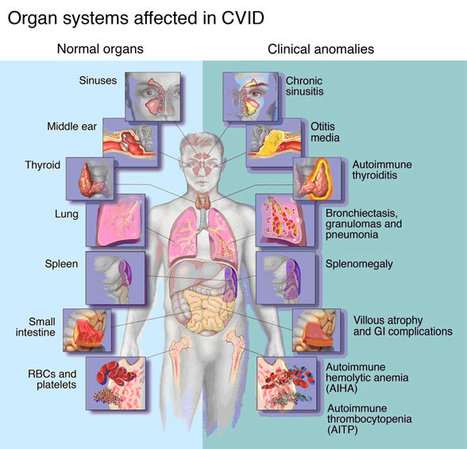

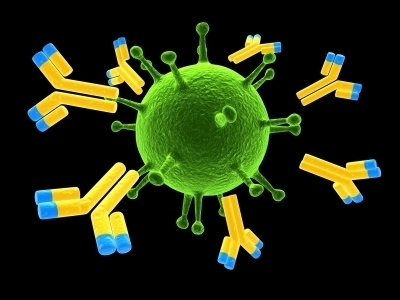
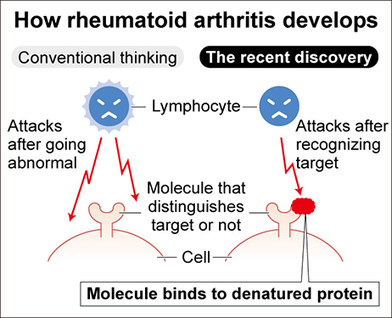


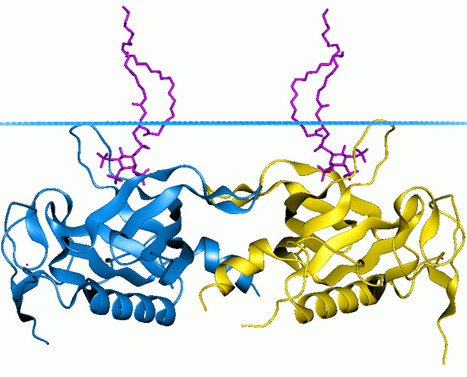



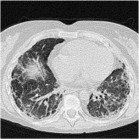
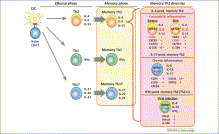
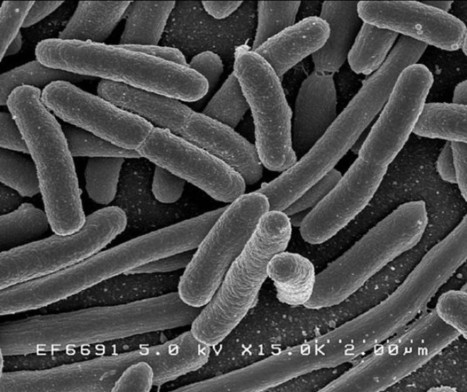



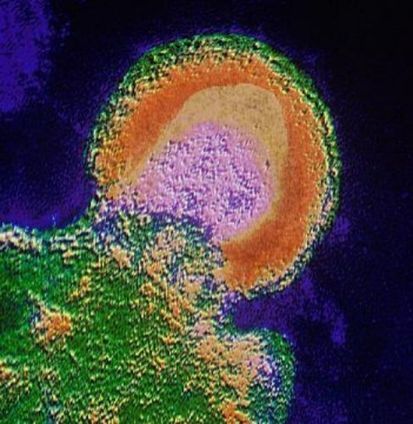


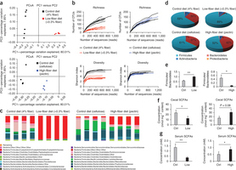
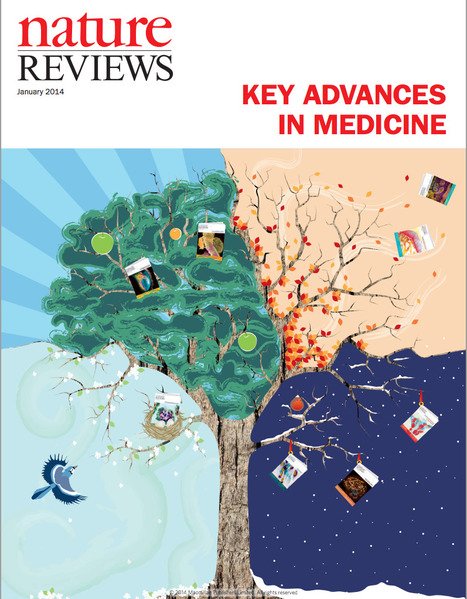


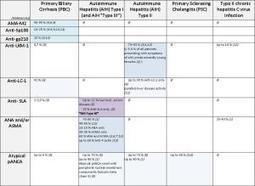

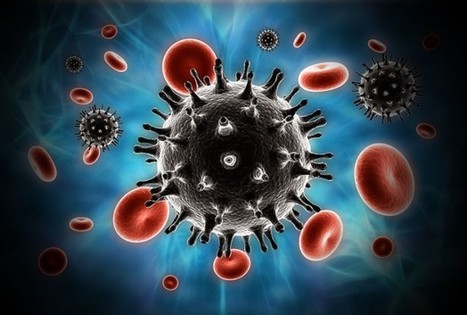





An atypically adult with CVID recently published on "The Lancet"